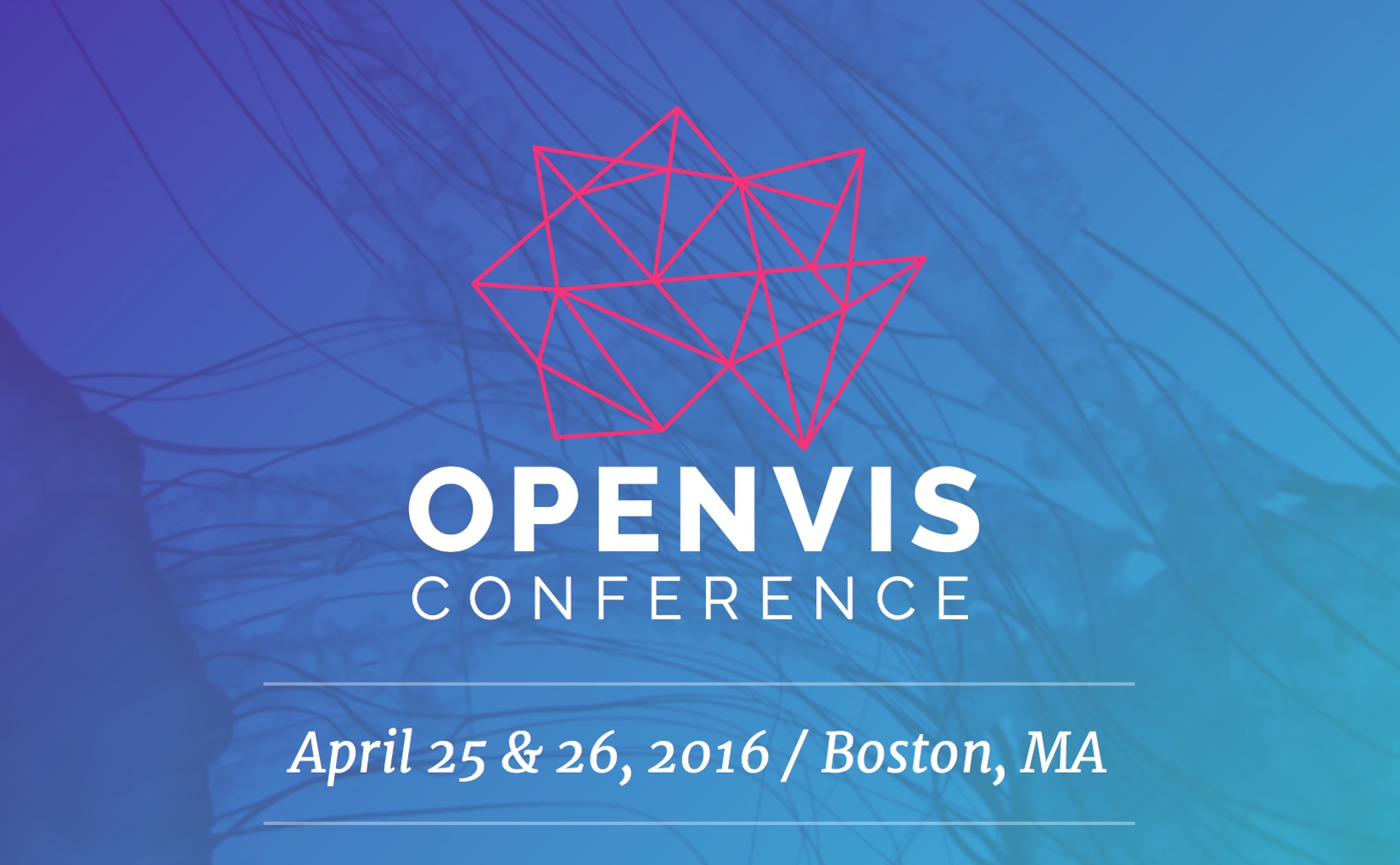
OpenVis 2016 Talk Videos and Pointers
The OpenVis Conference had another great selection of talks this year. Here is a list of my favorites, with talk videos and pointers to some additional materials.
The conference venue was the IMAX theater of the Boston Aquarium, which was great. Not only was the huge screen and theater seating a definite plus, but the ticket also included admission to the aquarium. Lots of OpenVis attendees went to see the fish and penguins during the lunch break.
The following is a relatively short list of my favorite talks. All the talk videos are up on the OpenVis website. You should take a look and play with the visualization of the topics covered by each.
Martin Wattenberg and Fernanda Viégas, Seeing Machines Think
Martin and Fernanda (or, to use the collective term I coined for them at OpenVis, Marnanda) gave a fun talk about visualization for neural networks. They focused on the visualization for the TensorFlow project they recently released.
One little gem in that talk was a link I grabbed to one of Martin's demos: a little chess program that shows you what it's thinking about. Fun to play with, though I wish it had some more ways of interacting with its thought process.
Amelia McNamara, Do You Know Nothing When You See It?
Amelia is a professor of statistics at Smith College. Her talk was quite different from the talk about Nothing Andy Kirk gave two years ago. She talked about a different approach to statistics than usual: using bootstrapping and simulation to build up distributions instead of looking up a value in a table for a test. She also used the graphical inference work by Hadley Wickham et al. from a few years ago.
Amelia has posted some links to materials as well as a complete write-up of her talk.
Nadieh Bremer, SVGs Beyond Mere Shapes
Last year and especially the year before, some of the technical talks went way too far into the weeds of code that really didn't make much sense in a talk. This year, they stayed at the right level, where they gave people ideas and pointed them in the right direction without trying to teach them things they could not possibly remember from a talk.
Nadieh's talk about SVG and CSS was especially well done. She showed some very clever uses of CSS, like different kinds of animation, using gradients to create a graying-out effect, etc. She has posted her slides and code, and is also slowly writing up a whole series of blog postings about all the different topics she covered. Great stuff.
Zan Armstrong, Everything is Seasonal
I really enjoyed Zan's talk, and I still think about it. She argued that seasonality needs to be taken into account when doing time series analysis. Okay. Then she showed the seasonality in birth data on several levels, which was really interesting.
But the key was her very cleverly constructed dataset that demonstrated how monthly aggregation leads you astray when your data has weekly rhythm. I've never seen this shown so clearly. She has made the birth data and some pointers available on github. If you only watch one talk today, make it this one.
Mona Chalabi, Informing Without Alienating
I'm a big fan of Mona Chalabi's work. She's a Data Editor at Guardian US now (Guardian UK and FiveThirtyEight before that), where she takes on some of the topics many people don't like to touch: bodily fluids, sexuality, etc.
She was the clincher when deciding whether to go to OpenVis, and I was not disappointed by her talk. She has a very human approach to data and does some really interesting work to bring difficult topics to people. In addition to watching her talk below, you should also follow her on Instagram, where she posts very interesting hand-drawn visualizations.
Kennedy Elliott, 37 Studies on Human Perception in 30 Minutes
Kennedy is Graphics Editor at the Washington Post. Her talk was a tour de force of 37 (or, as she later admitted on Twitter, actually 39) studies on perception in visualization. She has written the whole thing up on Medium and you can watch it below. It's a great way to get a sense of the kind of work that visualization is based on.
Jessica Hullman, The Visual Uncertainty Experience
The most surprising talk to me was Jessica's. Her talks tend to be more on the dry academic side – but not this one. She used some really fun comparisons and generally hit it out of the park. Well done!
This is my selection, covering less than half the talks. Siena Duplan has written a list that covers some other talks as well. And you should check out the rest yourself.
Posted by Robert Kosara on May 18, 2016. Filed under conference, OpenVis.

